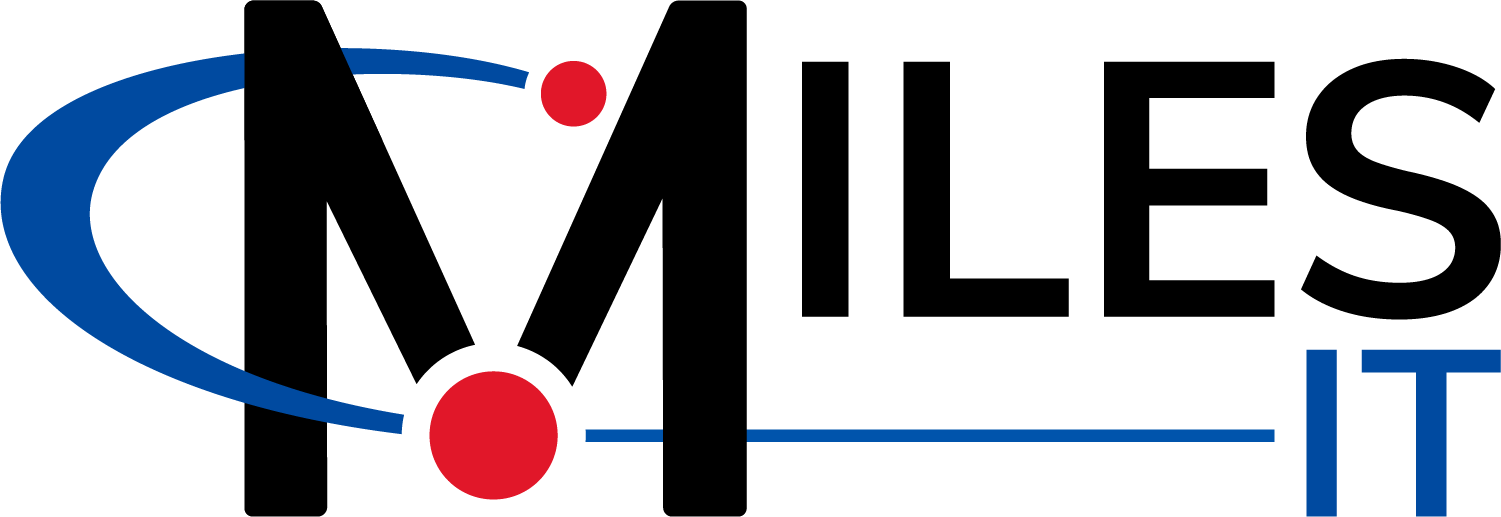The digital workforce is a term used to describe the integration of automation and artificial intelligence (AI) that leverages machines and coding to replace work traditionally done by humans. The concept of a digital workforce has been around for decades and became more mainstream in the late 2000s and early 2010s as automation technologies matured and AI capabilities improved.
As AI technologies advance at an accelerated rate and become more widely used, they open more opportunities to build a successful digital workforce. These opportunities have both technical and moral challenges with which to contend.
This blog examines different types of automation and artificial intelligence solutions and provides examples and steps that you can use to create your own digital workforce.
Your Digital Team: Automation & AI
For many years, you may have worked tirelessly to hone your recruiting, onboarding, training, management, and leadership skills to create an incredible team that has brought you to your current heights! Growing teams is a challenging, rewarding, and impactful skill that is the foundation for many organizations.
Now that technology has advanced, it is time to supplement your team with a digital workforce, but how? You may think that the skills, steps, and strategies for creating a digital workforce are much different than growing a human team.
Well, the good news is it’s not that different after all. It is still important to fill the right job openings (where can my digital workforce add value?), the right team members (what are the right AI and automation tools?), onboard your new team members (execute a well-planned rollout), and lead through ongoing training, evaluation, and management (identify metrics and evolve your digital team).
Don’t forget the importance of making sure everyone gets along by building a strong team that leverages the skills of the people on your team and the capabilities that your digital workforce can provide.
To best create your digital workforce, it is important to understand the different types of automation and AI solutions that will be the basis of your new team.
Automation
Automation is a term widely used to describe the use of technology to automatically perform rule-based and often repetitive tasks. Automation can streamline work, reduce errors, and increase productivity. Some predominant types of automation include:
- Task Automation, also known as Robotic Process Automation (RPA), involves the automation of repetitive tasks. These tasks may involve keying data into systems, assigning work, generating reports, and many other types of tasks. Task Automation can be performed to eliminate this repetitive and often mindless work through RPA tools, such as Power Automate, which allows users to build system connections, triggers, rules, and actions.
- Business Process Automation (BPA) involves automating more comprehensive and complex end-to-end business processes, often involving multiple people, departments, and systems. Business Process Automation often involves redefining processes to automate certain activities while maintaining a level of human decision-making.
- Robotic Automation includes using robotic devices, sensors, or physical devices to assist with activities that require physical interactions. The Internet of Things (IoT) connects everyday devices, ranging from your thermostat to your microwave, to automate everyday tasks.
Artificial Intelligence
Artificial Intelligence is a term used to describe systems that can analyze complex data, learn from patterns, and make informed decisions and recommendations. The predominance of AI solutions in our daily work and personal lives is growing rapidly, especially with natural language processing solutions such as ChatGPT and big-name players, including Microsoft and Google, competing in the AI space. Some of the more prominent types of AI solutions include:
- Natural Language Processing (NLP) enables computer systems to understand, interpret, and communicate in human language. The basis of ChatGPT, Bard, and other emerging AI chat solutions rely heavily on NLP.
- Computer Vision enables computer systems to read images and recognize components or properties of the image. Computer vision has various applications today, including flagging inappropriate images in social media and recognizing objects or people in photos.
- Generative AI describes solutions that leverage AI to generate content, including images, audio, text, code, and various other media types. There are many examples of generative AI solutions that you likely have already interacted with. Some examples include displaying an image of what you would look like with different hair, generating a short essay on a random topic, and generating text-to-speech.
- Deep Learning: Each of the AI solutions referenced above also have been developed using a type of machine learning called deep learning. This involves feeding models with millions to billions of documents, words, images, and other training content, and using human feedback to improve and train the models.
- Expert Systems are AI solutions trained to become experts in a particular domain to provide specific analysis, recommendations, or content generation in that particular area.
Strategic Applications of Your Digital Workforce
Artificial Intelligence and automation solutions are already integrated into the browsers, software, and apps that we use regularly. Yet, the power of leveraging automation and AI to create your digital workforce is limited only by your own creativity. Below are a few ideas of how to create a digital workforce in your business.
A common starting point for creating a digital workforce is customer interactions. This includes any regular interactions in any part of your organization, ranging from sales & marketing to customer service and collections. Some specific ideas include:
- Website Chatbots: Chatbots trained with content about your company from your website or other sources can provide a more personalized and improved experience. You can even integrate with email and phone systems to provide multi-channel communications and follow-up.
- Intelligent Marketing & Sales Automation: Marketing and sales automation solutions have existed for decades. However, there is more opportunity now than ever to create a competitive advantage through creative AI prompts, multi-channel follow-up (e.g. text messaging), and chances to learn more about prospects through social media and website mining solutions.
- Automated Collections Agents: AI can help every part of your business, and what better place to start than getting paid faster? Leverage a digital workforce to identify trends, send communications, and directly collect through a customer portal, IVR, or text message payment solution.
- Scheduling: Create a digital workforce armed with all of the information that drives your scheduling decisions and allow customers to directly schedule appointments or greatly reduce your work in creating schedules.
Data Processing describes any business process that involves reviewing or processing data in either paper or electronic form. There are countless opportunities to significantly streamline or eliminate manual data processing efforts in your organization. Some examples include:
- Form Processing: Many processes rely on the completion of paper or electronic forms reviewed and processed by humans. Advances in Optical Character Recognition (OCR) technologies combined with AI and automation tools allow for most of these processes to be fully or mostly taken over by your new digital workforce.
- Image Processing: Any business processes that rely heavily on images may be an ideal spot to focus your new digital workforce. This includes business processes ranging from reviewing before and after images as part of a service call, inspecting content shared by your customers, or even creating quotations based on captured drone imagery.
- Inbox Monitoring: Any business processes that rely on one or more people monitoring an inbox is likely a good candidate for your digital workforce.
Training & Onboarding programs are yet another target where the digital workforce can play a significant role in your organization. The combination of natural language processing and generative AI creates a wealth of opportunities for using a digital workforce as part of any training initiatives.
- Employee Onboarding: Provide new employee training and help with FAQs (your digital “buddy”).
- Video Training: Use AI solutions trained with the key concepts you seek to promote and leverage NLP prompts and text-to-video & speech technologies to create high-quality training videos.
- Quiz Generation: Feed your content into an AI engine to easily create quizzes that can be used as assessments in your training programs.
- Training Content: Current AI solutions provide deep learning models that ensure you do not miss any key concepts as part of your training. You can simply ask an AI engine to provide maint points on your topic of interest or prompt it with your existing content and ask what you’re missing.
Reduce the manual work that is part of your Quality Assurance efforts using your new digital workforce. QA automation and tools have been used for decades in many industries. With AI solutions providing advanced capabilities to analyze and report on data, you can reap significant benefits from developing a QA digital workforce.
- Content Review: The types of content that you create will differ greatly based on your industry and role. Regardless of these factors, it is possible to create a digital workforce that supports your team through the intelligent automated review of content, including web pages, blogs, emails, software code, or any content your team creates.
- Pattern & Anomaly Recognition: If you capture data as part of daily processes, you may want to create a digital workforce to recognize and convey potential patterns and anomalies within this data. You can take this a step further by automating follow-up actions based on the results.
There are many other areas where you can build your new digital workforce. Some other areas where you may consider creating your digital workforce include:
- Research & Analysis: perform market research, identify trends, present insights
- Inventory Management & Optimization: monitor stock levels, optimize reordering, and predict demand patterns
- Financial Analysis: analyze metrics related to budgeting, forecasting, and planning
- Supply Chain Management (SCM): streamline SCM processes, track shipments, and enhance vendor relationships
- Performance Improvement: analyze performance metrics and identify areas for improvement.
- Project Management: aid in tracking tasks and recognizing when projects are off-track, schedule meetings, create agendas, and facilitate collaboration.
- Virtual Assistants: Organize processes, manage appointments and perform research so that the human team members can focus on higher-level responsibilities
Getting Started
With so many different opportunities to create digital workforces, you may wonder, “Where should I start?” and “What steps should I take?”. Keep the following considerations in mind as you begin
- Impact: Identify the areas of your business that would be most significantly impacted through improvements. This could be high volume, high dollar, and/or high-risk activities. Are you limited in your ability to perform activities at times or at a scale that is necessary for you to be successful?
- Fit: Consider how well current AI and automation solution capabilities fit the required work. Are there repetitive tasks that could rely on the analysis of text, data, or media? Is there repetitive work that involves the generation of content?
- Risks: Consider whether there are risks of your digital workforce resulting in an over-reliance on technologies to perform critical duties. If there are, consider how your staff and computers would best interact with each other to gain the maximum benefit of each. Are there too many exceptions in your invoicing process to fully automate it? If so, your digital workforce could line up everything into a simple review queue for a person to easily catch and address potential exceptions. Are you afraid that communications from a bot would not create the same level of connection that your customers get from your team? If so, create simple shortcuts to generate communication templates, but encourage team members to review and add personalization before sending.
Once you have created a list of potential roles for your new digital workforce, it is time to review and determine where to start. Ideally, you will have found at least one area of low-hanging fruit that has a clear impact, fits well with current technologies and is not excessively risky. Once you have a focus area, it is important to remember that success will rely on your ability to lay out and execute a development and roll-out plan for your new workforce.
Need help defining or creating your digital workforce?
Reach out for a free consultation.


